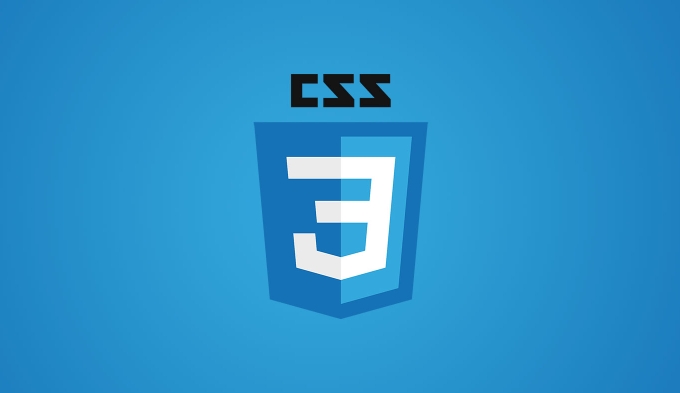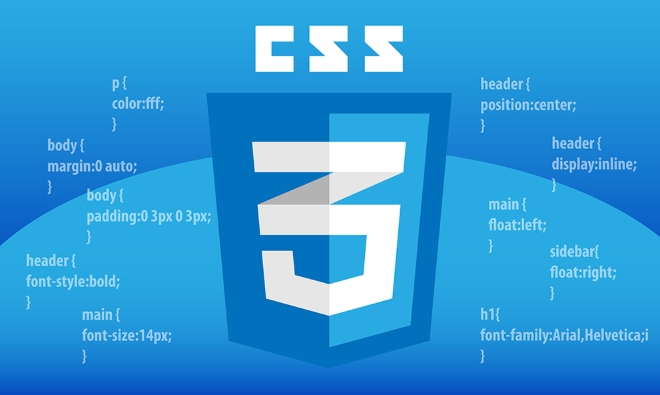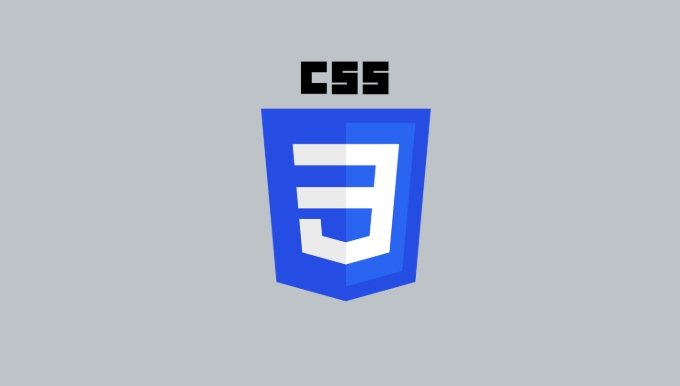CSS gradient backgrounds enable complex visual effects through cascading, animation and blending modes. 1. Multiple gradients can be separated by commas, and the bottom layer is drawn from the upper layer. It is recommended to use translucent colors and different directions to enhance the levels; 2. Animation can be implemented through background-position or keyframes, pay attention to performance and transition effect control; 3. Mix-clip: text can make gradient text, mask-image combined with gradient can realize image masking, mix-blend-mode is used for element interaction design.

CSS gradient backgrounds can look simple when done with basic syntax, but once you start layering them, animating them, or combining them with other effects like masks and blend modes, things get a lot more complex—and interesting.

Understanding the Basics of CSS Gradients
Before diving into advanced uses, it's good to remember that there are two main types: linear and radial. A basic linear gradient might look like this:

background: linear-gradient(to right, #ff0000, #0000ff);
That gives you a left-to-right red-to-blue background. Radial gradients work similarly but radiate from a central point:
background: radial-gradient(circle, #ffffff, #000000);
These basics are straightforward, but real complexity starts when you start stacking gradients, mixing colors, and using multiple stops.

Layering Multiple Gradients
One of the most powerful—but often overlooked—features is that you can layer multiple gradients on top of each other using commas. Each gradient will be drawn in the order you list them, with the first one at the bottom.
For example:
background: linear-gradient(45deg, rgba(255,0,0,0.5), rgba(0,0,255,0.5)), radial-gradient(circle at center, rgba(255,255,0,0.5), transparent), #00ff00;
Here, we've got a diagonal linear gradient, a yellow radial fade in the middle, and a base green color underneath. The result? A layered effect that looks richer than any single gradient alone.
A few tips for layering:
- Use semi-transparent colors so lower layers show through.
- Try different directions and shapes (like
radial-gradient(circle at top left,...)). - Combine with solid background colors or images for more depth.
Adding Animation to Gradients
You can animate gradients by changing their direction, color stops, or even background position. While you can't directly animate the gradient itself, what you can do is animate properties like background-position or use keyframes to change the entire background value over time.
Here's a simple looping animation that shifts the gradient:
@keyframes gradientShift {
0% { background-position: 0% 50%; }
50% { background-position: 100% 50%; }
100% { background-position: 0% 50%; }
}
.background {
background: linear-gradient(270deg, #ff9a9e, #fad0c4);
background-size: 400% 400%;
animation: gradientShift 5s ease-in-out infinite;
}This creates a smooth back-and-forth movement across the background. You can also use similar techniques to rotate gradients or make colors pulse.
Keep in mind:
- Performance matters—especially with large animated backgrounds.
- Use subtle transitions unless you're going for an eye-catching effect.
- Always test on different devices; not all browsers render animations the same.
Combining Gradients with Blend Modes and Masks
To take gradients further, try blending them with text or other elements using background-blend-mode , or clip them using mask-image .
For example, applying a gradient behind some text and blending them together:
.text-gradient {
background: linear-gradient(to right, #00c6ff, #0072ff);
-webkit-background-clip: text;
color: transparent;
font-size: 3rem;
}This makes the text look like it's made of the gradient itself.
Or if you want to mask a background image with a gradient:
.masked {
width: 300px;
height: 200px;
background: url('image.jpg');
mask-image: linear-gradient(to right, black, transparent);
}This hides part of the image gradually, creating a soft edge or transition.
Some useful combinations:
- Use
background-clip: textfor stylish headings. - Mask images with gradients for overlays or fades.
- Combine with
mix-blend-modefor creative interactions between overlapping elements.
Once you get comfortable with these techniques, the possibilities expand quickly. It's not just about making pretty backgrounds—it's about controlling how elements interact visually. And while the syntax might look intimidating at first, breaking it down step by step helps it make sense.
The above is the detailed content of Creating complex CSS Gradient backgrounds and effects. For more information, please follow other related articles on the PHP Chinese website!

Hot AI Tools

Undress AI Tool
Undress images for free

Undresser.AI Undress
AI-powered app for creating realistic nude photos

AI Clothes Remover
Online AI tool for removing clothes from photos.

Clothoff.io
AI clothes remover

Video Face Swap
Swap faces in any video effortlessly with our completely free AI face swap tool!

Hot Article

Hot Tools

Notepad++7.3.1
Easy-to-use and free code editor

SublimeText3 Chinese version
Chinese version, very easy to use

Zend Studio 13.0.1
Powerful PHP integrated development environment

Dreamweaver CS6
Visual web development tools

SublimeText3 Mac version
God-level code editing software (SublimeText3)

Hot Topics
 What is 'render-blocking CSS'?
Jun 24, 2025 am 12:42 AM
What is 'render-blocking CSS'?
Jun 24, 2025 am 12:42 AM
CSS blocks page rendering because browsers view inline and external CSS as key resources by default, especially with imported stylesheets, header large amounts of inline CSS, and unoptimized media query styles. 1. Extract critical CSS and embed it into HTML; 2. Delay loading non-critical CSS through JavaScript; 3. Use media attributes to optimize loading such as print styles; 4. Compress and merge CSS to reduce requests. It is recommended to use tools to extract key CSS, combine rel="preload" asynchronous loading, and use media delayed loading reasonably to avoid excessive splitting and complex script control.
 How to use Lotties in Figma
Jun 14, 2025 am 10:17 AM
How to use Lotties in Figma
Jun 14, 2025 am 10:17 AM
In the following tutorial, I will show you how to create Lottie animations in Figma. We'll use two colorful designs to exmplify how you can animate in Figma, and then I'll show you how to go from Figma to Lottie animations. All you need is a free Fig
 Breaking Boundaries: Building a Tangram Puzzle With (S)CSS
Jun 13, 2025 am 11:33 AM
Breaking Boundaries: Building a Tangram Puzzle With (S)CSS
Jun 13, 2025 am 11:33 AM
We put it to the test and it turns out Sass can replace JavaScript, at least when it comes to low-level logic and puzzle behavior. With nothing but maps, mixins, functions, and a whole lot of math, we managed to bring our Tangram puzzle to life, no J
 External vs. Internal CSS: What's the Best Approach?
Jun 20, 2025 am 12:45 AM
External vs. Internal CSS: What's the Best Approach?
Jun 20, 2025 am 12:45 AM
ThebestapproachforCSSdependsontheproject'sspecificneeds.Forlargerprojects,externalCSSisbetterduetomaintainabilityandreusability;forsmallerprojectsorsingle-pageapplications,internalCSSmightbemoresuitable.It'scrucialtobalanceprojectsize,performanceneed
 Does my CSS must be on lower case?
Jun 19, 2025 am 12:29 AM
Does my CSS must be on lower case?
Jun 19, 2025 am 12:29 AM
No,CSSdoesnothavetobeinlowercase.However,usinglowercaseisrecommendedfor:1)Consistencyandreadability,2)Avoidingerrorsinrelatedtechnologies,3)Potentialperformancebenefits,and4)Improvedcollaborationwithinteams.
 CSS Case Sensitivity: Understanding What Matters
Jun 20, 2025 am 12:09 AM
CSS Case Sensitivity: Understanding What Matters
Jun 20, 2025 am 12:09 AM
CSSismostlycase-insensitive,butURLsandfontfamilynamesarecase-sensitive.1)Propertiesandvalueslikecolor:red;arenotcase-sensitive.2)URLsmustmatchtheserver'scase,e.g.,/images/Logo.png.3)Fontfamilynameslike'OpenSans'mustbeexact.
 What is Autoprefixer and how does it work?
Jul 02, 2025 am 01:15 AM
What is Autoprefixer and how does it work?
Jul 02, 2025 am 01:15 AM
Autoprefixer is a tool that automatically adds vendor prefixes to CSS attributes based on the target browser scope. 1. It solves the problem of manually maintaining prefixes with errors; 2. Work through the PostCSS plug-in form, parse CSS, analyze attributes that need to be prefixed, and generate code according to configuration; 3. The usage steps include installing plug-ins, setting browserslist, and enabling them in the build process; 4. Notes include not manually adding prefixes, keeping configuration updates, prefixes not all attributes, and it is recommended to use them with the preprocessor.
 What are CSS counters?
Jun 19, 2025 am 12:34 AM
What are CSS counters?
Jun 19, 2025 am 12:34 AM
CSScounterscanautomaticallynumbersectionsandlists.1)Usecounter-resettoinitialize,counter-incrementtoincrease,andcounter()orcounters()todisplayvalues.2)CombinewithJavaScriptfordynamiccontenttoensureaccurateupdates.






